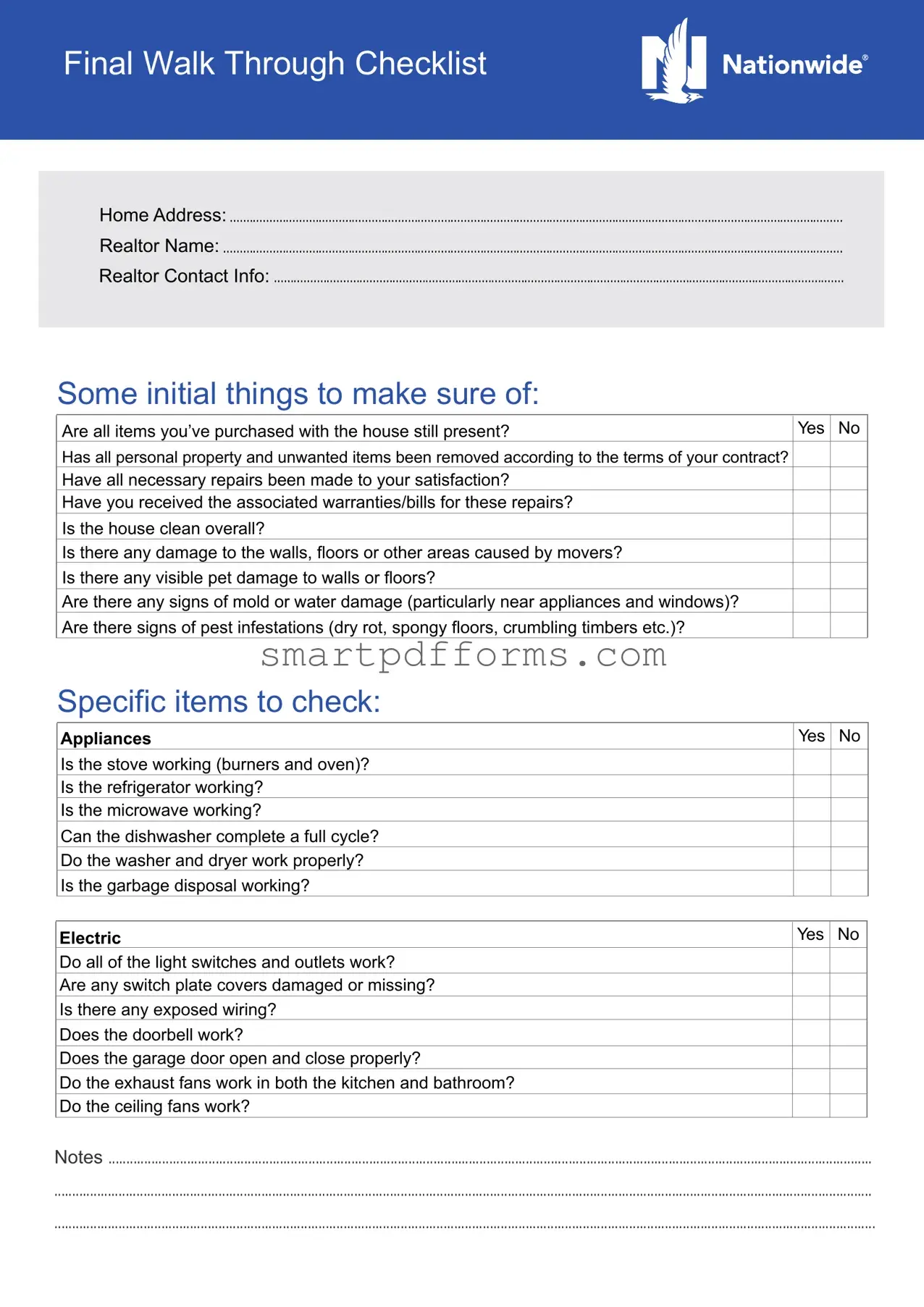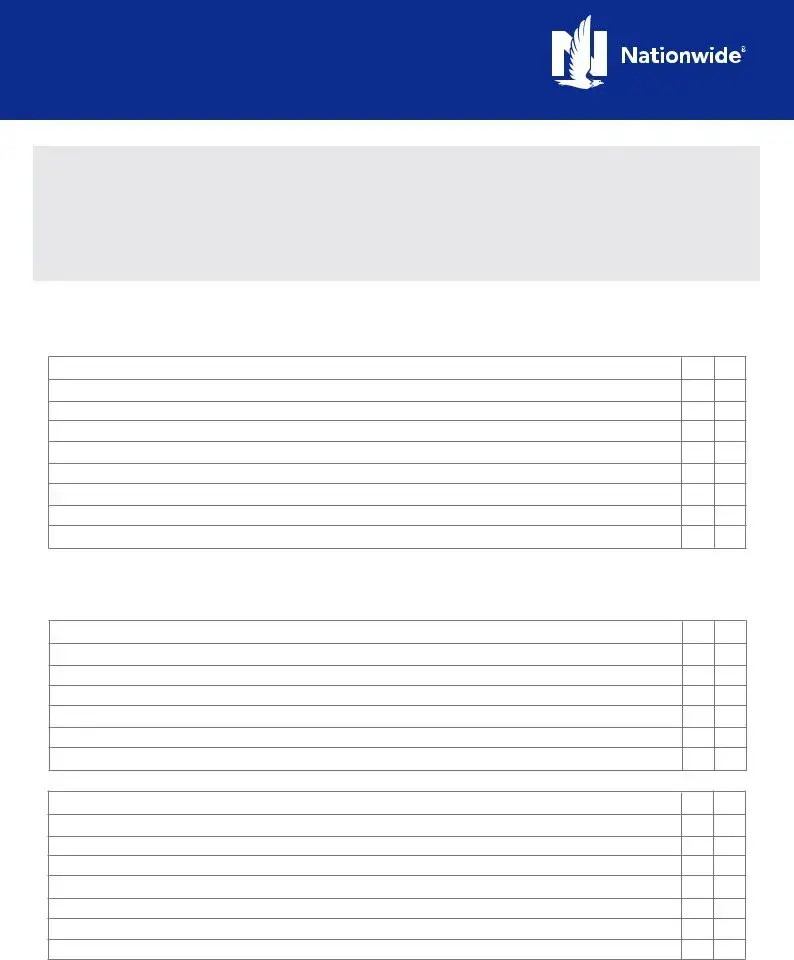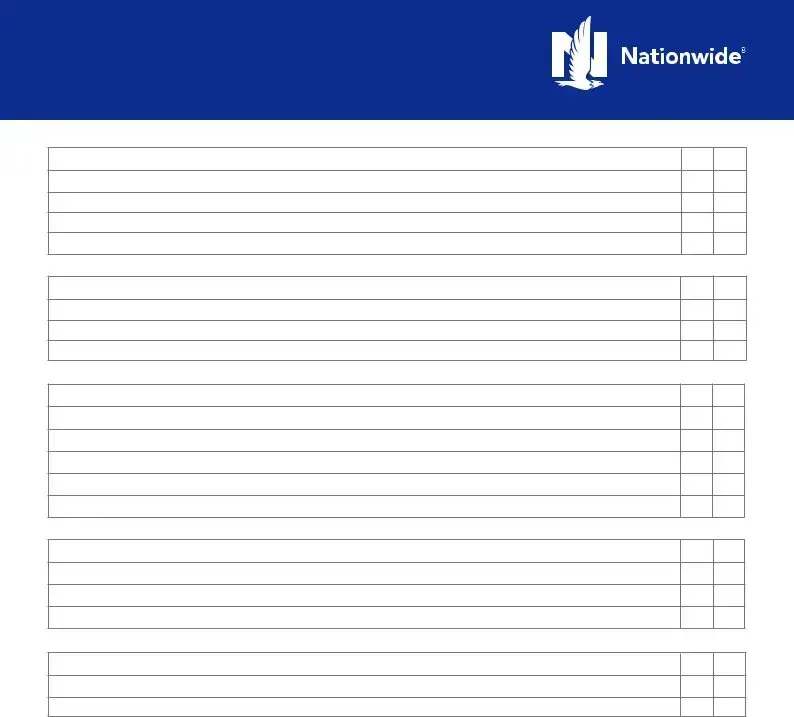What is the purpose of a Final Walk Through Checklist?
The Final Walk Through Checklist serves as a comprehensive guide for homebuyers to verify the condition of a property before completing a purchase. Its primary purpose is to ensure that all agreed-upon terms in the contract have been met, necessary repairs have been completed, and that the property is in the expected condition before the final sale. It helps identify any unresolved issues that need to be addressed, ensuring buyers are fully aware of the property's condition.
When should the Final Walk Through be conducted?
Typically, the Final Walk Through is conducted within the week before closing on the property, often 24 to 48 hours prior. This timing allows the buyer to ensure that the property's condition has not changed significantly since they last viewed it and that all conditions of the sale have been met. It also gives a small window for any last-minute resolutions if issues are found.
What are some of the initial things to check during the Final Walk Through?
Initial checks should include verifying that things you've agreed upon purchasing with the house are still present, ensuring that the seller's personal property and unwanted items have been removed as per your contract, confirming that all requested repairs have been made to your satisfaction, and checking for overall cleanliness and damage-free surfaces. Also assess the presence of pet damage, mold or water damage, and signs of pest infestations.
Why is it important to check appliances during the Final Walk Through?
Checking appliances is crucial because it ensures that all included appliances are in working condition as expected. This includes verifying the functionality of the stove, refrigerator, microwave, dishwasher, washer and dryer, and garbage disposal. Discovering any issues before the purchase can save time, expense, and inconvenience after moving in.
What should be inspected in terms of the electrical system?
During the Final Walk Through, you should check that all light switches and outlets are functioning, ensure there are no damaged or missing switch plate covers, verify that there is no exposed wiring, that the doorbell is operational, and that the garage door, exhaust fans, and ceiling fans work properly. This helps confirm the home's electrical systems are safe and functional.
How to assess plumbing and HVAC systems in the checklist?
For plumbing, verify that toilets flush correctly without leaking, sinks, bathtubs, and showers drain properly, water pressure is sufficient, and there are no leaks near faucets. In terms of HVAC, ensure the heating system and air conditioning unit work properly, and the thermostat is operational. These checks help ensure critical systems are functioning and will not pose immediate issues after purchase.
What are some of the specifics to check regarding windows, doors, and exterior areas?
- Verify there are no signs of condensation or fog in double-pane windows, the condition of window screens, and that all windows and doors open and close properly.
- Check locks and latches to make sure they work.
- Assess the condition of the basement, attic, and crawlspace, ensuring they are cleared out and free of pests.
- Confirm the outdoor landscaping is as remembered and that sprinkler systems work.
What steps should be taken if issues are identified during the Final Walk Through?
If issues are identified during the Final Walk Through, they should be communicated to the realtor immediately. Depending on their nature, it may be possible to negotiate repairs, a price adjustment, or a credit with the seller before finalizing the purchase. Documenting these issues carefully is essential for any discussions or negotiations.


